Ledberg Stone (Ledbergsstenen) With Magic Formula Dated To Viking-Era – One Of Most Beautiful Landmarks
A. Sutherland - AncientPages.com - The Ledberg Stone (Ledbergsstenen) is considered one of Sweden's most beautiful Runestones. This landmark is also one of the country's more familiar runestones due to its beautiful and imaginative adornment. Some parts of its motif are taken from the famous religious myth of Ragnarök, the final battle in Norse mythology, in which several gods meet their death.
The Ledberg Stone (Ledbergsstenen) is considered one of Sweden's most beautiful Runestones. Image credit: Olof Ekström 2004-12-31. Transferred by Maksim (to commons) - CC BY-SA 3.0
Among other depictions on the stone, there is Fenrir (the Wolf) - the oldest of three terrible children of Loki, according to the literary works Poetic Edda (the Icelandic medieval manuscript known as the Codex Regius) and Snorri Sturluson's Prose Edda, and Heimskringla.
The Ledberg Stone - commonly dated to the 11th century - stands at Ledberg church, close to Ledberg Hill, Östergötland's largest burial mound.
The stone's unique ornamentation also depicts god Odin devoured by Fenrir when the whole world falls.
It is difficult to say if it is the Ragnarok drama that the ancient artists wanted to illustrate on this remarkable runestone. Still, there are certain similarities between the carved images and the events described in the legend of Ragnarok.
The runestone was built into the wall in Ledberg's old church for a couple of hundred years. It is not exactly known where the stone was initially erected.
However, the church was demolished in the 1850s, and the stone had to be removed.
On the front side of the stone, there are two helmet-adorned Viking warriors. One is depicted with a sword, spear, and shield, and the other only with a shield. On the front are also two animals and a ship.
Also, on the opposite side is the depiction of two warriors, but without weapons. Between these warriors, there is an animal. The figures have been interpreted as a representation of Ragnarok. According to this interpretation, The warrior is the god Odin who - on the stone's front side, is getting ready for battle, and then he encounters the ship Naglfar, which, according to legend, is manned by all the creatures of evil, and carries demonic forces to Ragnarok.
This great Norse story continues - through images - on the back of the Ledberg Stone, showing Odin attacked by the Fenris beast. Odin is defeated, and the great Battle is finally over.
As we find in "The Symbolism of Plants: The Gods of the Germanic Peoples," Volume 45, Volume 45, by Harry Eilenstein, on the Ledberg Stone is written:
"Square hole... his father, the two of them, Bise and Gunna (raised the stone)."
"On this runestone, which was built about 1050 for the name "Thorgautr," you can find a very special inscription (carved in the Younger futhark) with a magic formula.
The following three words are:
Thistle mistletoe kiste
That gives the sentence or, more precisely, the picture: "A thistle and a mistletoe in a box."
Why Were These Runes Important?
These runes would protect the stone from impact. This magic formula contains three magic words:
In ancient Norse beliefs, people believed that these words had magical properties. The same magic spell was discovered on many stones in the Nordic countries.
The Ledberg Stone is carved on three sides. Its third side is covered with the carving of a cross. It is dated to the 11th century.
Written by – A. Sutherland - AncientPages.com Senior Staff Writer
Updated on June 10, 2024
Copyright © AncientPages.com All rights reserved. This material may not be published, broadcast, rewritten or redistributed in whole or part without the express written permission of AncientPages.com
More From Ancient Pages
-
 Fossil Teeth Reveal: Humans Were Present In Asia ‘20,000 Years Earlier’ Than Previously Thought
Archaeology | Oct 15, 2015
Fossil Teeth Reveal: Humans Were Present In Asia ‘20,000 Years Earlier’ Than Previously Thought
Archaeology | Oct 15, 2015 -
 King Sanakht: Mysterious Ancient Egyptian Pharaoh Was A ‘Giant’ – Scientists Say
Archaeology | Aug 9, 2017
King Sanakht: Mysterious Ancient Egyptian Pharaoh Was A ‘Giant’ – Scientists Say
Archaeology | Aug 9, 2017 -
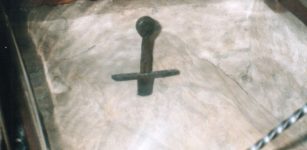 Mystery Of The Real Sword: How Did A Meter Long Sword End Up In Solid Rock?
Artifacts | Apr 15, 2019
Mystery Of The Real Sword: How Did A Meter Long Sword End Up In Solid Rock?
Artifacts | Apr 15, 2019 -
 Cartography Shows That The Isthmus Of Tehuantepec Was Used As An Inter-Oceanic Passage In The 16th Century
Archaeology | Oct 21, 2022
Cartography Shows That The Isthmus Of Tehuantepec Was Used As An Inter-Oceanic Passage In The 16th Century
Archaeology | Oct 21, 2022 -
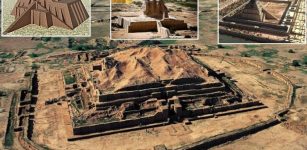 Ziggurats, Axis Mundi And Strong Connection To Religion In Mesopotamia
Featured Stories | Mar 17, 2021
Ziggurats, Axis Mundi And Strong Connection To Religion In Mesopotamia
Featured Stories | Mar 17, 2021 -
 Unknown Fragments Of Two Euripides Tragedies Found In Egyptian Grave
Scripts, Paintings & Inscriptions | Sep 9, 2024
Unknown Fragments Of Two Euripides Tragedies Found In Egyptian Grave
Scripts, Paintings & Inscriptions | Sep 9, 2024 -
 Elli – Norse Goddess And Symbol Of Old Age That No One Ever Could Defeat
Featured Stories | Dec 21, 2017
Elli – Norse Goddess And Symbol Of Old Age That No One Ever Could Defeat
Featured Stories | Dec 21, 2017 -
 Ancient Secrets Of The Masters Of Mu – Keepers Of Sacred Knowledge – Part 2
Ancient Mysteries | Aug 25, 2018
Ancient Secrets Of The Masters Of Mu – Keepers Of Sacred Knowledge – Part 2
Ancient Mysteries | Aug 25, 2018 -
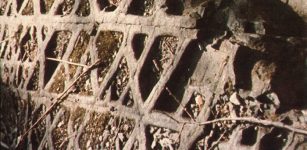 America’s Mysterious Waffle Rock Formation
Featured Stories | Apr 15, 2014
America’s Mysterious Waffle Rock Formation
Featured Stories | Apr 15, 2014 -
 Recently Found ‘Neanderthal Footprints’ In the South Of Spain Could Be 275,000 Years Old
Featured Stories | Dec 1, 2022
Recently Found ‘Neanderthal Footprints’ In the South Of Spain Could Be 275,000 Years Old
Featured Stories | Dec 1, 2022 -
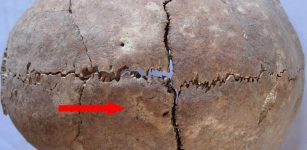 Physical Violence In Ancient Mesopotamia Much Less Common Than Ancient Texts Suggest – New Study
Archaeology | Mar 29, 2017
Physical Violence In Ancient Mesopotamia Much Less Common Than Ancient Texts Suggest – New Study
Archaeology | Mar 29, 2017 -
 Ancient Artifacts With Puzzling Signs Found In North America May Be Evidence Of A Lost Civilization Or Unknown Native American Tribe
Featured Stories | Feb 4, 2025
Ancient Artifacts With Puzzling Signs Found In North America May Be Evidence Of A Lost Civilization Or Unknown Native American Tribe
Featured Stories | Feb 4, 2025 -
 Amazing Adventure Of The Viking Who Escaped A Death Sentence Using His Artistic Talents
Featured Stories | Feb 9, 2025
Amazing Adventure Of The Viking Who Escaped A Death Sentence Using His Artistic Talents
Featured Stories | Feb 9, 2025 -
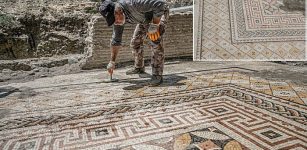 Yet Another Beautiful Roman Mosaic In Hatay, Turkey
Archaeology | Jul 14, 2022
Yet Another Beautiful Roman Mosaic In Hatay, Turkey
Archaeology | Jul 14, 2022 -
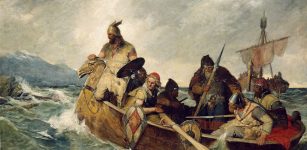 Evidence Scots And Irish Settled Iceland A Century Before The Vikings?
Featured Stories | Jan 7, 2023
Evidence Scots And Irish Settled Iceland A Century Before The Vikings?
Featured Stories | Jan 7, 2023 -
 The Olympics In Ancient And Modern Times – What Has Changed?
Featured Stories | Jun 20, 2019
The Olympics In Ancient And Modern Times – What Has Changed?
Featured Stories | Jun 20, 2019 -
 New York Was Once Called New Amsterdam – History Behind The Change Of Name
Ancient History Facts | Jan 14, 2017
New York Was Once Called New Amsterdam – History Behind The Change Of Name
Ancient History Facts | Jan 14, 2017 -
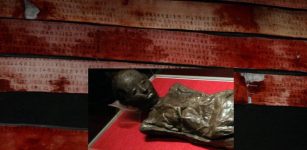 ‘Liber Linteus’ – Unique History Of Ancient ‘Linen Book’ Written In Etruscan That Still Remains Poorly Understood
Artifacts | Oct 21, 2019
‘Liber Linteus’ – Unique History Of Ancient ‘Linen Book’ Written In Etruscan That Still Remains Poorly Understood
Artifacts | Oct 21, 2019 -
 Our Early Ancestors Probably Created Intricate Artwork By Firelight
Archaeology | Apr 21, 2022
Our Early Ancestors Probably Created Intricate Artwork By Firelight
Archaeology | Apr 21, 2022 -
 Is The Tomb Of Genghis Khan Hidden And Protected In The Khentii Mountains Because Some Fear It’s Cursed?
Featured Stories | Jul 16, 2021
Is The Tomb Of Genghis Khan Hidden And Protected In The Khentii Mountains Because Some Fear It’s Cursed?
Featured Stories | Jul 16, 2021

